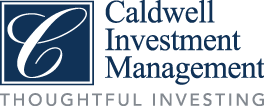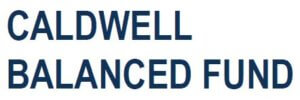Macro Commentary
Markets sold off aggressively in the first quarter ("Q1") as the spread of COVID-19 accelerated and hit European and U.S. shores. The S&P 500 was down 31% for the year at its low on March 23rd and ended the quarter down 20%. The S&P/TSX Composite Index was down 35% for the year at its low on March 23rd and ended the quarter down 21.6%. Both markets have recovered materially into April.
Portfolio Commentary
Taking it down to the portfolio level, our core investment principles have not changed: protect and grow our investors' capital through discounted valuations, strong balance sheets, high quality management teams and attractive business environments.
There wasn't much that worked in the market, with only 10 out of 230 stocks in the S&P/TSX Composite posting a positive return in Q1. Stocks in the portfolio that held up relatively well were: i) those seeing some benefit from COVID-19 (Johnson & Johnson's Tylenol brand, for example); ii) those that are mission-critical to their customers and have high recurring revenue (Oracle); iii) those that have strong secular growth drivers that are likely to accelerate post COVID-19 (Ansys). Stocks that under-performed included those with direct negative impact from COVID-19 (Middleby, which makes food equipment that goes into restaurants), and energy stocks, which continue to be pressured as low demand and at-capacity storage have recently driven oil prices into negative territory.
As we outlined in our March commentary, we used the market's indiscriminate selling to further update the quality of businesses we own in your portfolio. Two such stocks were added to the portfolio in Q2: United Health ("UNH-us") and L3 Harris ("LHX-us").
United Health is a U.S. healthcare conglomerate that operates the largest health insurance company by premiums written, along with an in-house pharmacy benefits manager ("PBM", OptumRx) and a care provider network of walk-in, primary care and out-patient surgical service clinics (OptumHealth). The company was years ahead in understanding the benefits of combining the insurer, PBM, and care network under one roof. This has led it to consistently outperform peers on its medical cost ratio, a key metric that drives both strong profitability and market share gains as costs are better controlled and premium writing is better understood. We see significant growth runway for the company, particularly within OptumHealth, as it continues to capitalize on the shift of the U.S. health system to value-based care.
L3Harris, created in mid-2019 through the merger of Harris Corporation and L3 Technologies, is the 6th largest U.S. defence contractor. From an end-market perspective, the company is well-positioned with respect to the U.S. Department of Defence's strategic priorities, and is also well-diversified across spending categories. We also expect significant value creation from the merger given a management team that has a strong track record of successfully integrating acquisitions.
Looking Forward
We often get asked, "What is your view of the market going forward?" While this question is not easy to answer in the best of times, it is increasingly difficult to answer in the current market environment given the cross-currents presently at play. On the positive, governments around the world are singularly focused on winning this "war" against the virus, with monetary and fiscal policy having reached new levels on ‘do whatever it takes’ philosophies. Death counts are well-below original estimates but that's because societies and economies have been put on hold - the only tool that's available to minimize the virus spread until a vaccine becomes available, which is expected to be another year away, at the earliest. The U.S. has seen 26.5 million jobless claims* over a 5-week period, far outstripping previous highs, even during the Great Financial Crisis. The U.S. unemployment rate is expected to exceed 20%, a level not seen since 1934, the midst of the Great Depression. But markets have moved higher on this news given the aforementioned government responses and given a market that was already off meaningfully from its highs. With the market recently rallying off of the first wave of selling, it suggests that investors have re-positioned their portfolios to the new reality. However, the situation is fluid and we expect news coming out of first quarter earnings for U.S. companies will prompt additional adjustments and therefore volatility.
Cash planning continues to be critical, so talk to your Investment Advisor if you plan to draw on cash within the next 2 years.
* Data as of April 23, 2020.
All data is as of March 31, 2020 sourced from Capital IQ, U.S. Department of Labor, Evercore unless otherwise indicated. The information contained herein provides general information about the Fund at a point in time. Investors are strongly encouraged to consult with a financial advisor and review the Simplified Prospectus and Fund Facts documents carefully prior to making investment decisions about the Fund. Commissions, trailing commissions, management fees and expenses all may be associated with mutual fund investments. Rates of returns, unless otherwise indicated, are the historical annual compounded returns including changes in unit value and reinvestment of all distributions and do not take into account sales, redemption, distribution or optional charges or income taxes payable by any unitholder that would have reduced returns. Mutual funds are not guaranteed; their values change frequently and past performance may not be repeated. Publication date: April 28, 2020.
12303168464egw4gwe4g

